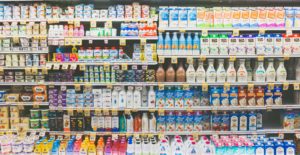 The cost of living in Alaska is high and Alaskans know it. In fact, in a ranking of 250 cities around the country in early 2021, four Alaskan cities are ranked in the top 25 most expensive: Juneau, Fairbanks, Kodiak, and Anchorage. Unfortunately, some policymakers have recently alluded to the idea of instituting a statewide sales tax, perhaps without a full consideration of how such a tax might affect the everyday Alaskan. While less harmful than many other types of tax, sales taxes tend to raise prices, thus increasing the cost of living in the areas where they are implemented.
The cost of living in Alaska is high and Alaskans know it. In fact, in a ranking of 250 cities around the country in early 2021, four Alaskan cities are ranked in the top 25 most expensive: Juneau, Fairbanks, Kodiak, and Anchorage. Unfortunately, some policymakers have recently alluded to the idea of instituting a statewide sales tax, perhaps without a full consideration of how such a tax might affect the everyday Alaskan. While less harmful than many other types of tax, sales taxes tend to raise prices, thus increasing the cost of living in the areas where they are implemented.
In case you need a reminder of what prices are like in Alaska compared to the national average, or maybe you are a reader from Outside, listed below are examples of some everyday expenses in Anchorage from the Alaska Department of Labor and Workforce Development. We acknowledge that prices vary widely across the state and are much higher in many areas. A half-gallon of milk costs about $3.00 in Anchorage, compared to a $2.17 national average, while a medium cheese pizza rings up at $11.49 in Anchorage and $10.74 nationally. But what about something more significant than pizza or milk? A routine doctor’s check-up costs $209 in Anchorage, while the national average is only about $117, a 78.6 percent difference. The lowest monthly premium for a 40-year-old applicant for the silver-tier of Affordable Care Act health insurance coverage in Alaska is $673 – the only state with higher premiums is Wyoming.
How would instituting a statewide sales tax affect the prices mentioned above, as well as the cost of living throughout the state? The economic effects of taxes get complicated quickly, what with secondary and indirect effects, so presented here is a simplified example. For a more in-depth but still understandable explanation of how taxes affect the economy, check out this four-part series written by a reputable Alaskan economist. If a sales tax is imposed on sugary drinks, economic studies show that businesses will raise the price on the taxed items, to accommodate the tax. Because of the higher price, consumers buy fewer sugary drinks, thus decreasing the profit of businesses. Raising the price of a normal good decreases the consumption of that good. In response to the drop in profit, businesses may cut employee hours, decrease pay, or even lay off some employees. As a result of their smaller paychecks, employees have less money to spend at other businesses, therefore indirectly affecting all businesses in the community. It’s a vicious cycle.
While there is more nuance to the sales tax discussion, the basic economic lesson is clear: sales taxes increase prices. Increased prices lead to a higher cost of living. Alaskans already have a high cost of living and are working hard to reboot the state’s economy after the COVID-19 pandemic shutdowns. An artificial increase in prices around the state will harm, not help, those efforts to boost the economy.
As Alaska Policy Forum has explained before, including in our study analyzing the economic effects of various proposals to tax Alaskans: new taxes come with new burdens for both the taxpayer and the state. Perhaps Alaska will need to raise taxes someday, but not today.
Particularly after the COVID-19 pandemic, our state’s economy is too unstable, its budget too erratic, and its business environment too unpredictable to provide the tax base needed for responsible tax increases. Until that changes, policymakers must find other ways to create a responsible budget and strong economy. That begins with Alaska tightening its belt and making meaningful reductions to costs.